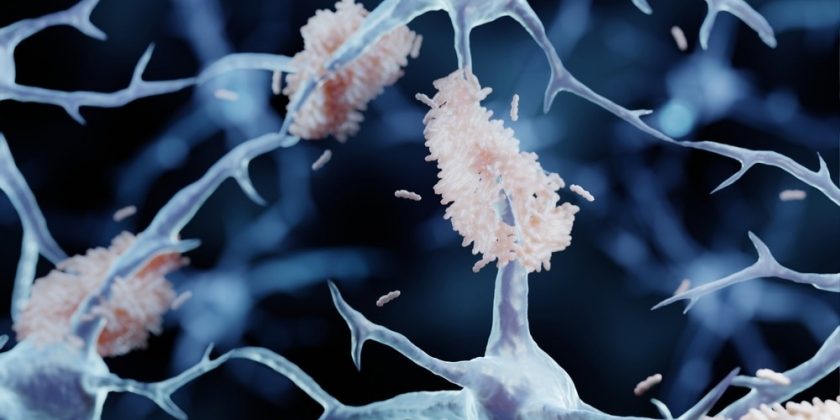In a recent JAMA Network Open study, researchers compare Klotho protein levels within both cerebrospinal fluid (CSF) and plasma samples of healthy individuals and patients diagnosed with different stages of Alzheimer’s disease (AD).

Study: Association of klotho protein levels and KL-vs heterozygosity with Alzheimer's disease and amyloid and tau burden. Image Credit: ART-ur / Shutterstock.com
Background
The Klotho transmembrane protein is primarily expressed in the kidneys and choroid plexus of the brain. The lack of this protein within the brains of klotho knockout mice led to cognitive deficits, premature death, and synaptic loss. Conversely, the overexpression of the Klotho protein in mice is associated with an extended lifespan, improved cognitive function, and reduced age-associated phenotypes.
The KL-VS haplotype in the Klotho gene typically consists of six missense variants. KL-VS heterozygosity, which leads to greater Klotho levels within the body, is associated with a longer lifespan, higher cortical volume, improved cognition, and lower amyloid-related tau pathology in patients diagnosed with AD.
Despite the documented protective effects associated with the Klotho protein, there remains a lack of data on how Klotho concentrations might differ in AD patients. In one study, researchers found that CSF Klotho levels decreased with age and were higher in healthy elderly individuals as compared to those with AD. Furthermore, low plasma Klotho levels have been associated with lower Mini-Mental State Examination (MMSE) scores and a greater risk of vascular dementia but not late-onset Alzheimer's disease.
About the study
Between January 1, 2009, to December 31, 2018, 243 participants were selected for the current study, 117 of whom served as healthy controls, 102 were considered patients with mild cognitive impairment due to AD (AD-MCI), as well as 24 patients diagnosed with dementia due to AD (AD-dementia).
For all study participants, a neurological examination, blood screening, CSF collection, and cognitive tests, including MMSE, were performed.
Study findings
As compared to both AD-MCI and AD-dementia patients, the healthy controls had the highest median Klotho levels within their CSF samples. Notably, the levels of Klotho protein in the CSF of AD patients decreased as disease severity increased. A weak but significant association was observed between CSF Klotho levels and both age and MMSE scores.
Previous studies have shown that individuals carrying the APOE4 allele and are heterozygous for KL-VS exhibited reduced amyloid burden and risk of AD. However, in the current study, the presence of the APOE4 allele did not have a significant effect on CSF Klotho concentrations in any of the study cohorts, regardless of sex.
Further analysis of CSF AD biomarkers including Aβ42, T-tau, and P-tau indicated that CSF Klotho levels had a significant positive association with Aβ42 levels in the CSF. Comparatively, a significantly negative association was observed between CSF Klotho levels and both T-tau and P-tau levels in the CSF. Thus, Klotho protein levels may reflect cognitive function, with lower CSF Klotho levels potentially indicative of a more rapid and considerable cognitive decline among patients with AD.
Heterozygous KL-VS individuals were associated with significantly greater CSF Klotho levels as compared to non-carriers in the AD group; however, this was not observed in the AD-dementia group.
KL-VS heterozygosity did not have a significant impact on Aβ42, T-tau, and P-tau levels in the CSF samples of any group.
Correlations with plasma Klotho levels
Both APOE4 status and sex did not have a significant impact on plasma Klotho concentrations. However, a significant negative association was identified between plasma Klotho levels and age.
Nevertheless, a significant negative association was identified between plasma Klotho levels and T-tau levels within the CSF.
KL-VS heterozygosity was more likely to have higher median plasma Klotho levels as compared to non-carriers. This correlation was significantly different among AD patients, with KL-VS heterozygous carriers exhibiting greater levels of Klotho levels within the plasma as compared to non-carriers; however, this difference was only significant when the AD-MCI group was considered.
Conclusions
Taken together, the study findings demonstrate that a greater amount of Klotho protein within the CSF is associated with reduced CSF amyloid and tau burden levels. These differences were independent of both KL-VS heterozygosity and APOE4 status, thus indicating that the KL-VS haplotype is not necessarily indicative of AD pathogenesis to the same extent as Klotho protein levels.
Further research is needed to better understand the mechanisms responsible for reduced Klotho levels during aging, particularly among patients with AD. Furthermore, therapeutic approaches that could potentially increase Klotho levels should also be explored.
- Grøntvedt, G. R., Sando, S. B., Lauridsen, C., et al. (2022). Association of klotho protein levels and KL-vs heterozygosity with Alzheimer's disease and amyloid and tau burden. JAMA Network Open. doi:10.1001/jamanetworkopen.2022.43232
Posted in: Men's Health News | Medical Research News | Medical Condition News | Women's Health News
Tags: Aging, Allele, Alzheimer's Disease, Blood, Brain, Cognitive Function, Dementia, Gene, Knockout, Pathology, Protein, Research, Vascular

Written by
Nidhi Saha
I am a medical content writer and editor. My interests lie in public health awareness and medical communication. I have worked as a clinical dentist and as a consultant research writer in an Indian medical publishing house. It is my constant endeavor is to update knowledge on newer treatment modalities relating to various medical fields. I have also aided in proofreading and publication of manuscripts in accredited medical journals. I like to sketch, read and listen to music in my leisure time.
Source: Read Full Article
